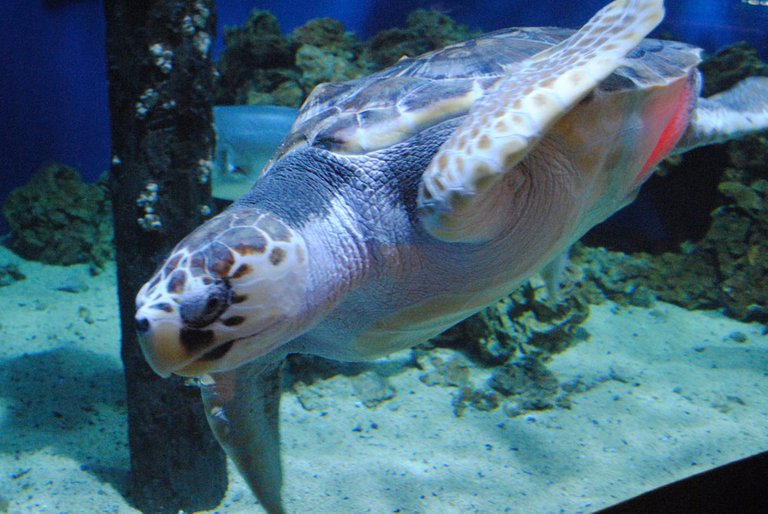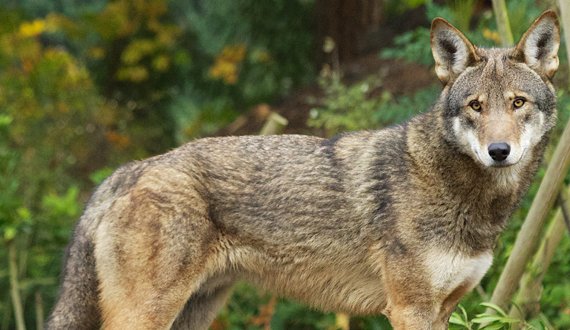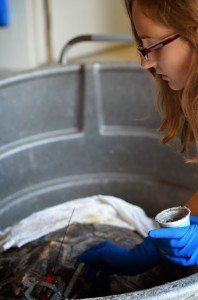
For those of you who have only recently started following me, I work as a reptile/amphibian keeper at a museum that houses (mostly) Virginia native wildlife. Indoors, we support an impressive aquarium collection and a number of exhibits featuring small birds, mammals, reptiles and amphibians; outside we have otters, beavers, eagles, bobcats, endangered red wolves and many other animals. While many facilities focus on exotic species, we believe that it is important for Virginians to recognize the species that live right here in our own state, and what we can do to protect our own local natural resources.

Every animal in our collection is here because it cannot be released into the wild. Some have sustained injuries that would quickly prove lethal in the wild (blindness, damaged wings, partial paralysis, etc). Others were orphaned or taken in by humans and cannot survive on their own. Many of our animals were foolishly kept as pets and were either surrendered or even seized by police, and because they have been in captivity so long, they cannot legally be released (this prevents the spread of disease to wild populations and the introduction of invasive species). When a wild animals with injuries is brought in, vet technicians and keepers assess the damage and whether or not the animal can feasibly be released after rehabilitation. The animals that are deemed non-releasable are kept onsite as "animal ambassadors"; they allow us to connect people to local wildlife and promote biological education to visitors. The animals also benefit from their captivity; animals that would quickly perish in the wild are able to live quality lives here under the care of keepers and onsite vets. (The only exceptions to the rule are our red wolves and lined seahorses; these animals are here as part of a federal breeding program and will -hopefully- one day be released).

Our tiger salamander had a nasty abscess on his jaw when we acquired him. As part of his treatment, a large portion of his lower jaw was surgically removed. Because of this, he has difficulty catching food such as insects and would likely have quickly perished in the wild. Here at the museum, he is provided with a special diet and we can ensure that he is getting the proper nutrition!
One of our biggest attractions is our Chesapeake Bay Aquarium, a massive 30,000 gallon marine aquarium that houses several species of fish, sharks and, most popularly, our loggerhead sea turtle. Our loggerhead turtle is a weird sort of exception to the non-release rule: she is healthy enough to be released...just not right away. Our facility takes part in a sea turtle head start program by providing a temporary home to marine turtles. Head start programs are a means of protecting sea turtles by caring for hatchlings that might otherwise not make it on their own (only about 1 in 1,000 hatchlings naturally survive to reproduce). Scouring the nesting beaches, aquarium staff around the world take in turtles that are too weak or unable to make it to the water on their own. The hatchlings are kept in captivity for several years until they are large enough and strong enough to survive on their own. Our museum hosts turtles for about two years before returning them to the Chesapeake Bay.

With our turtle weighing almost 200 pounds, she was more than capable and healthy enough to be deemed releasable! After being carefully lifted out of the aquarium, she was prepared for transport to North Carolina, where she would meet up with a few dozen turtles to be released just off the coast. Being the largest of these young turtles, she was affixed with a satellite tag that would allow the local aquarium to monitor her movements and activity. The tag is applied to the shell with a temporary epoxy and is designed to fall off after about 6 months. Every time the turtle surfaces to breath, the tag will mark her location; so far, she has been making a bee line towards the coast of Europe!


Following the successful rearing and release, our aquarium team prepares for another new arrival. Within a few days, the NC aquarium will provide us with another young turtle in need of this critical head start. After a brief quarantine, it will be exhibited in our Chesapeake Bay Aquarium for a couple years until it too is ready for the open ocean!

I've never heard of surgical operations being carried out on amphibians before. This is really fascinating
It's not especially common. They are pretty sensitive animals and there isn't a whole lot you can do for them when they have major injuries or illnesses. The tiger salamander is an endangered species which prompted us to at least consider a more unorthodox route. The jaw surgery was sort of a first for everyone involved, but almost 9 years later, the salamander is doing great!
That's a crazy rewarding feeling to be able to follow this type of animal for 6 months on their journey back into the wild. I'm glad that the tracker isn't permanent. Now you can post "Where In The World" updates.
How'd you get this turtle in the first place -- from a beach rescue?
The turtles are collected by volunteers and staff from North Carolina Aquariums. Since they take in dozens of turtles, they look to other facilities to house them during their rearing; we are one of those foster facilities!
Amazing! Congratulations to all the team involved, must be an amazing feeling!
I love your post and the good work you guys are doing. Great stuff!!
How much fun to help injured animals while educating the public and allowing them to see first hand the beauty of the animals that live around us. I have swum with several loggerheads while diving and they are spectacular. It's like mental yoga being around one. Fantastic work and a great report!
I don't know how I've missed your content on Steemit before. Following.
Wow!Excellent photography.You are really creative photographer. this is a knowledge's post because of it's related of science .